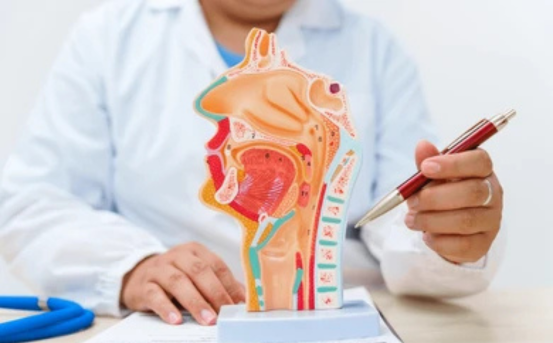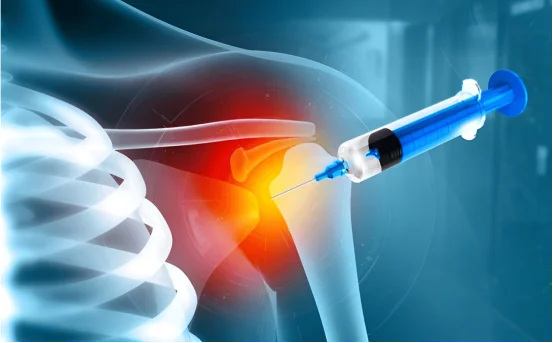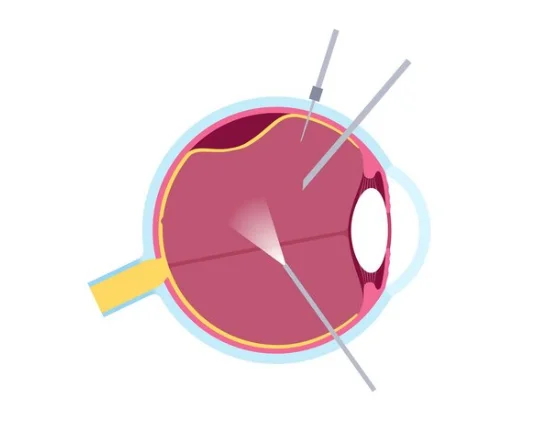Laryngectomy surgery is a life-changing medical procedure that involves the partial or total removal of the larynx, commonly known as the voice box. This surgery is often necessary for individuals diagnosed with advanced laryngeal cancer, severe trauma to the neck, or other rare conditions affecting the larynx. While it can be a daunting prospect, laryngectomy can be life-saving and offers many patients a new lease on life.
This surgery can also be necessary due to traumatic injuries, severe infections, or damage caused by previous radiation therapy. While the idea of removing the larynx may sound daunting, especially given its crucial role in speaking, breathing, and swallowing, the procedure can be life-saving and offer a new beginning for many patients.
What is a Laryngectomy?
A laryngectomy is a surgical procedure in which a part or all of the larynx (voice box) is removed. The larynx is a vital organ located in the throat that houses the vocal cords and helps with breathing, swallowing, and speaking.
Why is Laryngectomy Performed?
The most common reason for laryngectomy is laryngeal cancer, especially when it’s in an advanced stage and cannot be treated effectively with radiation or chemotherapy alone. Other reasons include :-
-
Severe trauma to the larynx (e.g., accidents, injuries)
-
Radiation damage from previous cancer treatments
-
Chronic laryngeal infections or conditions
-
Rare congenital abnormalities
Laryngectomy may be a last-resort procedure when other treatments have failed or when preserving the larynx is no longer viable.
Types of Laryngectomy
There are two primary types of laryngectomy procedures :-
Total Laryngectomy
In a total laryngectomy, the entire larynx is removed. This includes the vocal cords, resulting in the permanent loss of natural voice. After surgery, breathing is redirected through a stoma, a permanent opening in the neck (tracheostomy) through which the person breathes.
Partial Laryngectomy
In a partial laryngectomy, only part of the larynx is removed. This procedure may preserve the patient’s ability to speak and swallow normally, depending on how much of the voice box remains intact.
Preparing for Laryngectomy Surgery
Before undergoing a laryngectomy, patients typically undergo :-
-
Imaging tests :- CT scan, MRI, or PET scan to assess the extent of cancer.
-
Biopsy :- To confirm cancer diagnosis.
-
Speech and language therapy consultations :- To discuss post-surgery communication methods.
-
Nutritional evaluation :- To prepare for potential post-surgery feeding changes.
The patient’s overall health and medical history will be carefully assessed to ensure they are fit for surgery.
The Surgical Procedure: What Happens During Laryngectomy?
A laryngectomy is performed under general anesthesia and typically takes 5 to 10 hours, depending on the complexity of the case.
Step-by-Step Overview :-
-
Incision :- The surgeon makes a precise incision in the neck to access the larynx.
-
Removal :- Depending on the type, part or all of the larynx is surgically removed.
-
Tracheostomy Creation :- A permanent opening (stoma) is made in the neck to allow breathing.
-
Wound Closure :- The remaining tissues are stitched and surgical drains may be placed.
-
Feeding Tube Placement :- A temporary feeding tube may be inserted to ensure proper nutrition during recovery.
Recovery After Laryngectomy Surgery
Hospital Stay
Most patients stay in the hospital for 7 to 14 days post-surgery. During this time, medical staff closely monitor for complications such as infection, bleeding, or difficulty healing.
Breathing and Stoma Care
After a total laryngectomy, breathing occurs through the stoma. Patients are trained on how to clean and care for the stoma to prevent infections and ensure clear airflow.
Nutrition
Initially, patients may receive nutrition through a feeding tube. Over time, many regain the ability to swallow and can eat soft or blended foods.
Communication Changes
Since the vocal cords are removed, traditional speech is no longer possible in total laryngectomy. However, several alternative methods help patients regain the ability to communicate :-
-
Electrolarynx :- A handheld device that produces vibrations, allowing speech through mouth movements.
-
Esophageal speech :- Involves learning to swallow air and produce sound by releasing it.
-
Tracheoesophageal puncture (TEP) :- A small valve placed between the windpipe and food pipe allows speech using redirected airflow.
Life After Laryngectomy: Adapting to a New Normal
A laryngectomy changes life in many ways, but with time and support, patients can adapt and lead fulfilling lives.
Emotional and Psychological Support
Losing the ability to speak or breathe normally can be emotionally challenging. Patients may feel isolated or anxious. Speech therapists, support groups, and psychological counseling play a crucial role in recovery.
Daily Life Adjustments
-
Breathing through a stoma :- Requires adjustment and care, especially in dusty or smoky environments.
-
Showering :- Special stoma covers or waterproof guards help protect the airway.
-
Sleeping :- Positioning is essential to ensure clear breathing.
Returning to Work and Social Life
With rehabilitation, many patients return to work and enjoy social interactions. Communication devices, writing tools, or mobile apps can aid in expression.
Risks and Complications of Laryngectomy
As with any major surgery, laryngectomy comes with certain risks :-
-
Infection or wound healing issues
-
Fistula formation (abnormal opening between tissues)
-
Difficulty swallowing
-
Permanent speech loss (in total laryngectomy)
-
Emotional distress
Most of these risks are manageable with timely intervention and postoperative care.
Long-Term Follow-up and Rehabilitation
Laryngectomy patients require regular follow-up appointments to monitor healing and check for cancer recurrence. Ongoing speech therapy, nutritional counseling, and stoma care education are vital parts of the rehabilitation process.
Advances in Laryngectomy Surgery and Voice Restoration
Medical advances have significantly improved outcomes after laryngectomy. Minimally invasive techniques, voice prostheses, and robotic-assisted surgeries are enhancing surgical precision and recovery.
Voice restoration techniques, especially TEP with voice prosthesis, now allow many patients to speak with near-normal voice clarity, which was not possible decades ago.
Conclusion
Laryngectomy surgery is a major step, usually considered when cancer or injury severely affects the larynx. While it involves significant physical and emotional changes, it is also life-saving and, with the right support, can lead to a meaningful, communicative life.























